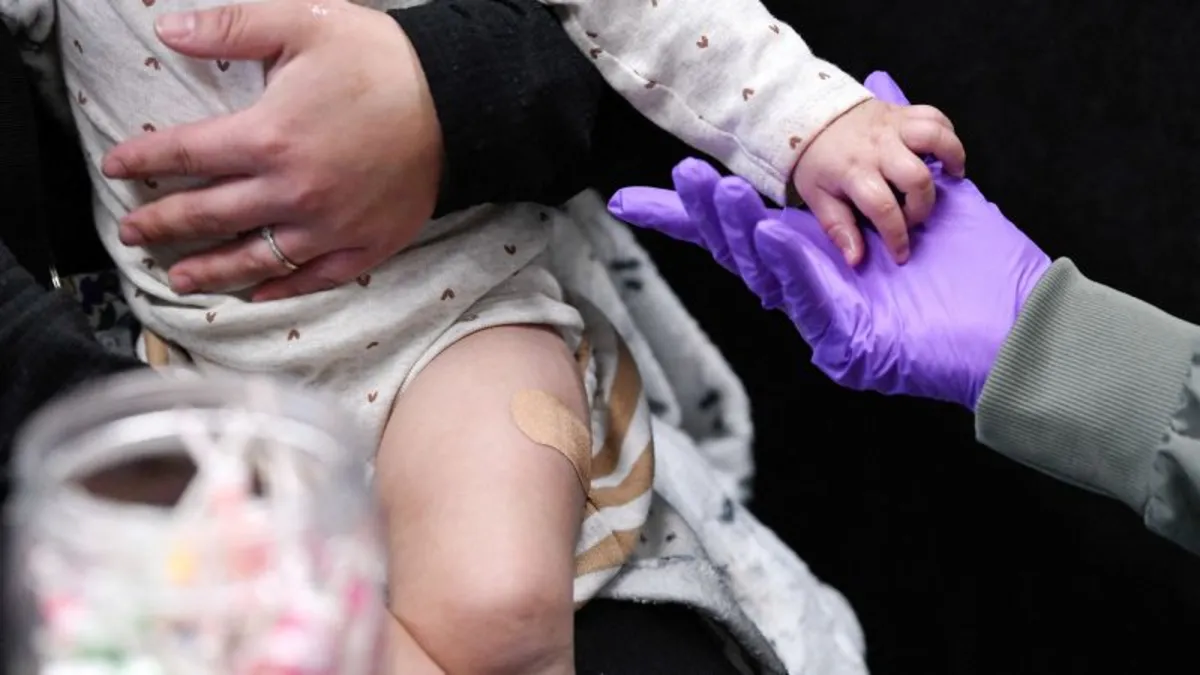
The recent suggestion by Jim O’Neill, the Acting Director of the US Centers for Disease Control and Prevention (CDC), to separate the measles, mumps, and rubella (MMR) vaccine into three individual shots has alarmed public health experts. O’Neill's announcement coincided with a similar sentiment expressed by former President Donald Trump on social media platform X in September. This proposal has sparked significant debate regarding the potential impact on vaccination rates and public health.
The MMR vaccine has been a staple of childhood immunization in the United States since its approval in 1971. The vaccine was designed to provide comprehensive protection against three highly contagious diseases. To gain better insights into the implications of splitting the vaccine, I consulted with Dr. Leana Wen, a wellness expert at CNN, who has extensive experience in public health.
Dr. Wen explains that all three diseases are caused by contagious viruses that historically resulted in severe health complications, including death, before the advent of vaccines. For instance, prior to the measles vaccine, annual statistics indicated that measles led to approximately 48,000 hospitalizations and 400 to 500 deaths, predominantly in children. Mumps is linked to serious complications such as brain swelling, testicular inflammation, and hearing loss, while rubella poses significant risks during pregnancy, including miscarriage and congenital rubella syndrome, which can lead to severe birth defects.
The development of the MMR vaccine aimed to streamline the immunization process by combining three vaccines into a single shot. This approach has proven advantageous as it minimizes the number of doctor visits and needle sticks required. Currently, the CDC recommends two doses of the MMR vaccine—one between 12 to 15 months and the second between 4 to 6 years. If separated shots were to be implemented, children would need to receive a total of six injections instead of just two.
In theory, an advantage of separating the MMR vaccines might allow families to customize vaccination schedules. Some parents believe that spacing out the shots could reduce the chances of side effects, such as fever or mild rash. However, research has not substantiated these claims. Practically, separating the vaccines can lead to increased clinic visits, raising the likelihood that some children may miss doses and remain unprotected against these highly contagious diseases. Moreover, there is no evidence suggesting that individual vaccines are safer or more effective than the combined MMR vaccine.
As it stands, separate vaccines for measles, mumps, and rubella are not available in the United States. The only approved option remains the combined MMR vaccine. Although O’Neill has urged manufacturers to explore the development of individual vaccines, this process is likely to take years. It involves rigorous clinical testing and regulatory approval from the US Food and Drug Administration (FDA), which poses challenges, especially when these diseases have become rare due to successful immunization efforts.
Health experts warn that a decline in vaccination rates could lead to the resurgence of measles, mumps, and rubella. As community immunity diminishes, outbreaks can spread rapidly, posing a significant threat to public health. Notably, there have already been 1,544 confirmed cases of measles in 2025, the highest since the disease was declared eliminated 25 years ago. Vulnerable groups, including newborns, individuals with weakened immune systems, and older adults, are at the highest risk if vaccination rates fall.
The concept of community immunity relies on widespread participation in vaccination programs. When the majority of the population stays up to date with immunizations, it not only protects individuals but also safeguards those who are most susceptible to severe outcomes from these diseases. The ongoing discussion about separating the MMR vaccine highlights the importance of maintaining high vaccination rates to ensure public health safety.